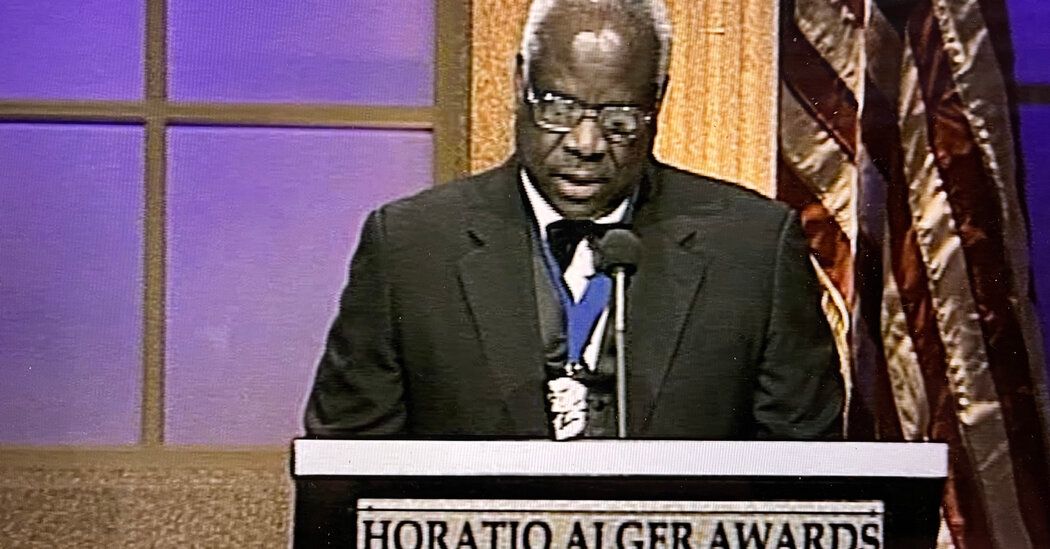The Elite Circle Clarence Thomas Entered That Led to the Supreme Court
On Oct. 15, 1991, Clarence Thomas secured his seat on the Supreme Court, a narrow victory after a bruising confirmation fight that left him isolated and disillusioned.
Within months, the new justice enjoyed a far-warmer acceptance to a second exclusive club: the Horatio Alger Association of Distinguished Americans, named for the Gilded Age author whose rags-to-riches novels represented an aspirational version of Justice Thomas’s own bootstraps origin story.
If Justice Thomas’s life had unfolded as he had envisioned, his Horatio Alger induction might have been a celebration of his triumphs as a prosperous lawyer instead of a judge. But as he tells it, after graduating from Yale Law School, he was turned down by a series of top law firms, rejections he attributes to a perception that he was a token beneficiary of affirmative action. So began his grudging path to a judicial career that brought him great prestige but only modest material wealth after decades of financial struggle.
When he joined the Horatio Alger Association, Justice Thomas entered a world whose defining ethos of meritocratic success — that anyone can achieve the American dream with hard work, pluck and a little luck — was the embodiment of his own life philosophy, and a foundation of his jurisprudence. As he argued from the bench in his concurrence to the recent decision striking down affirmative action, the court should be “focusing on individuals as individuals,” rather than on the view that Americans are “all inexorably trapped in a fundamentally racist society.”
Source: The New York Times


